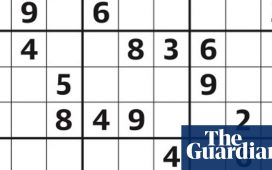Three years ago, Ashleigh Barty was ranked No. 623 in the world. As Wimbledon begins on Monday, the 23-year-old Barty has risen to No. 1, following up her French Open victory with a grass-court title in Birmingham, England.
Now comes the hard part for Barty: maintaining her No. 1 ranking.
Barty has taken over the top spot in women’s tennis from Naomi Osaka, 21, who has struggled with her form after winning last year’s U.S. Open and the Australian Open in January and parting with her coach.
After losing early in a tournament in Miami in March, Osaka told reporters, “I feel like I’ve dealt with the stress of people asking me do I have pressure because I have the No. 1 next to my name. I thought I was doing fine with that, but I guess I’m not. I think more about winning now compared to the matches before where I didn’t necessarily think that was the case.”
Hall-of-Fame player Chris Evert said stepping on the court as a player who everyone expects to win is draining.
“Maybe their emotions get in the way, and by the time they get to the semis or the finals, they’re exhausted,” said Evert, a former world No. 1 and current ESPN analyst.
In women’s tennis, only three active players have won five or more major titles: Serena Williams (23), Venus Williams (7), and Maria Sharapova (5). All three players appear to be in the twilight of their careers and have been dealing with nagging injuries. Five-time Wimbledon champion Venus Williams, age 39, has dropped to No. 44 in the rankings and will be unseeded. Although Serena Williams, age 37, remains a threat to win any tournament she enters, she has had to withdraw or retire from three of her last four events due to injuries. She hasn’t played an event since losing in the round of 32 at the French Open to Sofia Kenin.
Meanwhile, the 32-year-old Sharapova, the 2004 Wimbledon champion, has been sidelined by a shoulder injury for most of the year, and only returned to action in June in Mallorca, Spain. Last year, Sharapova fell in the first round at Wimbledon after missing the tournament the prior two years due to suspension and injuries.
Serena Williams arrives for a training session at the All England Club.
Photo:
Associated Press
Between Serena Williams’s Australian Open victory in 2017 and Naomi Osaka’s 2018 U.S. Open win, seven different women won seven different majors.
“Serena, Venus, they can do it because they know—they’ve done it so many times before,” Evert said. “They know how to manage themselves in between matches. they don’t get all excited if they have a big win. If anything, they just like forget about it, put it aside, and they rest and they look forward to the next day.”
Other players in the women’s game have emerged for a brief time only to stumble.
Eugenie Bouchard, 25, looked like a certain star in 2014, when she reached the semifinals in Australia and Roland Garros, followed by her first major final at Wimbledon. But since a quarterfinal at the start of 2015, she has never gone past than the round of 16 at a major and has lost in the first round of a Slam six times.
Jeļena Ostapenko won the French Open in 2017, and stayed in the mix by reaching the semifinals at Wimbledon last year. But since then she has fallen to No. 35. She has lost in the first round at her last two Grand Slam tournaments. Aryna Sabalenka, 21, looks like she has all the skills, but has struggled in majors. Belinda Bencic, 22, reached the U.S. Open quarterfinal when she was just 17. But injuries have set her back. Garbiñe Muguruza, 25, is wildly unpredictable. When in tune, she has won two majors. But she struggles far more often.
Part of the problem: In today’s sport, a burst of attention can quickly spiral out of control, especially with the rise in social media.
“It puts a lot of pressure on popular players with large social media followings,” said Nick Saviano, a longtime coach. “It can easily become a distraction and cause a loss of focus.”
Another player, Sloane Stephens, 26, recently showed that an unplanned break from tennis could lead to a fresh start. Stephens missed three majors because of a foot injury (after surgery, she couldn’t walk). She returned to win the U.S. Open in 2017 and has since reached another major final at last year’s French Open.
At Wimbledon, Barty is the favorite but she has never advanced past the third round at the All England Club. But she has a crafty game, and is good at adjusting in matches. As far as her long-term wear-and-tear, an old injury is of mild concern.
“It’s an injury that we’ve had to manage since I was 16 years old,” Barty said. “When I have a spike in load it comes up—it’s a bone stress injury and I need to look after it, particularly in these first few days.”
Naomi Osaka has struggled since winning the Australian Open in January.
Photo:
carl recine/Reuters
Despite her recent struggles, Osaka shouldn’t be discounted.
Why? Because she’s a rare potential star, according to Rick Macci, a former coach of Serena Williams.
“She’s the deal—I said that when she beat Serena at the U.S. Open,” Macci said. “She’s going to be one of the best players in the world for many, many years and win multiple Slams.”







